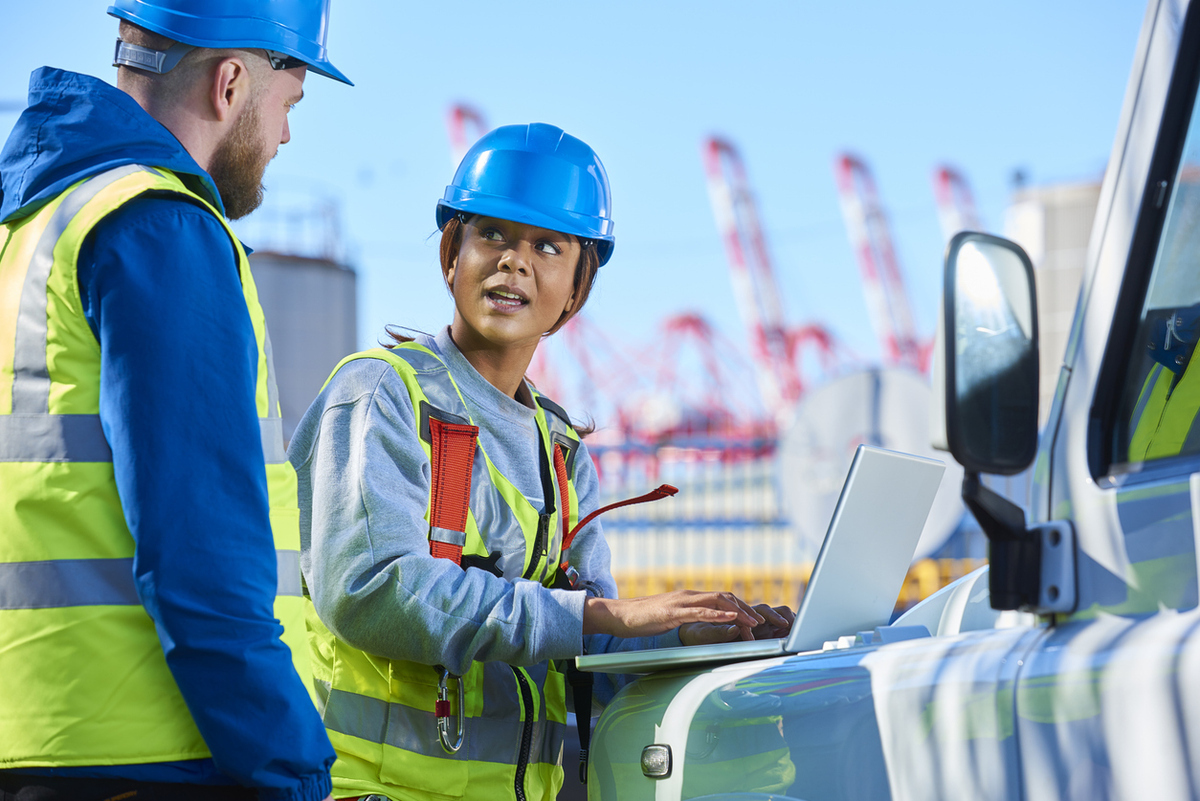The Expert View: Modernising UK Maritime Ports with Technology
Sponsored by AWSUK ports can unlock numerous gains through technological modernisation, but the sector is a complicated one, as leaders explained at a recent Business Reporter dinner.

Before the last election, the Labour Party, now in government, announced plans to invest almost £2 billion in upgrading UK ports. Meanwhile, in the US, a strike by dockworkers has ended in a pay deal but with warnings of further disruption over automation plans. These developments highlight the challenges facing maritime ports, particularly when it comes to technology.
Amazon Web Services (AWS) believes it can help, said Dave Todman, Head of Transport for the UK Public Sector at AWS, opening a Business Reporter dinner briefing at the House of Lords in London. He highlighted AWS’s experience working with organisations like Transport for London on digital twins, and Manchester Airport Group with artificial intelligence (AI) powered computer vision technology and best-in-class generative AI to improve services and conditions for passengers and staff, noting that ports could benefit from this shared expertise.
Navigating rough seas
Attendees at the briefing - all senior figures from the UK’s maritime ports sector - highlighted several challenges, with cybersecurity particularly significant. Ports are sometimes directly targeted by cyberattacks, but also get caught up in broader incidents. With multiple cybersecurity standards in place, ports must develop robust continuity plans tailored to their specific needs. “We don’t have the luxury of a backup facility down the road,” one attendee noted. This makes it crucial for ports to test and update security measures regularly, ensuring they can handle unforeseen disruption.
Personal safety was another key topic of discussion. Several attendees emphasised that safety culture must be driven from the top. One said the CEO at his port personally conducts safety tours during site visits, demonstrating the leadership’s commitment to safety. Industry-wide sharing of lessons from safety incidents has also helped improve standards.
Sustainability and environmental resilience challenges were also raised. Decarbonisation efforts, driven by regulatory concerns and environmental needs, are forcing ports to rethink their operations. Rising sea levels and extreme weather also threaten port infrastructure, making resilience planning an urgent priority.
However, the transition to low-emission fuels can present a safety risk, as these new fuels require careful handling. “The future will likely be a patchwork of different solutions,” one attendee predicted, given the cost and inefficiency of current alternatives.
Plotting a new course
Several executives pointed out that ports are often seen as lagging airports by about a decade, in technology terms, partly due to the sector’s fragmented structure. UK ports are managed under a diverse ownership model, including private operators, trusts, and local authorities. This diversity can lead to inconsistent progress in modernisation efforts.
The workforce challenge was another critical issue. The sector struggles to attract younger workers, and the retirement of older employees is creating a skills gap. While ports like Port of Rotterdam and Port of Antwerp have built visitor centres to showcase their innovation and relevance, UK ports are not doing enough to follow similar strategies.
Full steam ahead
Despite these challenges, technology offers numerous opportunities to drive change. Virtual reality (VR) is being used to train port operatives, providing a safe environment for learning and making mistakes, speeding up skills acquisition for a job that can take years to master.
Attendees also discussed the concept of "smart ports", though some felt it was more of a marketing term than a reality. True digital transformation is complicated by the wide variety of systems used by ships from around the world, making standardisation difficult. Digital twins, however, were cited as a promising solution. These virtual models allow operators to test improvements without disrupting real-world operations, minimising risk and optimising use of resources.
There was also significant interest in using data-driven tools to improve efficiency and sustainability. Autonomous shipping has potential as an electric-powered alternative to traditional shipping, though only for short trips. Digital twins, coupled with Internet of Things (IoT) devices, can help reduce wear and tear on equipment, improving energy efficiency and extending the lifespan of infrastructure.
Some executives noted that long-term partners don’t always innovate quickly enough and suggested working with new partners, in testbeds where they can experiment with new technologies, bringing cutting-edge solutions into the port ecosystem.
In closing, Mr Todman encouraged attendees to embrace a "fail fast" mentality, without over-investing. The cloud offers tools to experiment, but a cultural shift is required to fully capitalise on these opportunities. The future of the UK’s maritime ports, he concluded, will depend on a combination of technological innovation and a willingness to take calculated risks.
To learn more, please visit: www.aws.com

Business Reporter Team
Most Viewed
Winston House, 3rd Floor, Units 306-309, 2-4 Dollis Park, London, N3 1HF
23-29 Hendon Lane, London, N3 1RT
020 8349 4363
© 2024, Lyonsdown Limited. Business Reporter® is a registered trademark of Lyonsdown Ltd. VAT registration number: 830519543